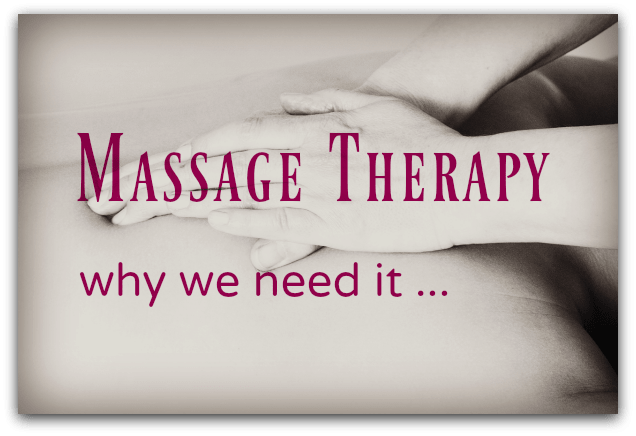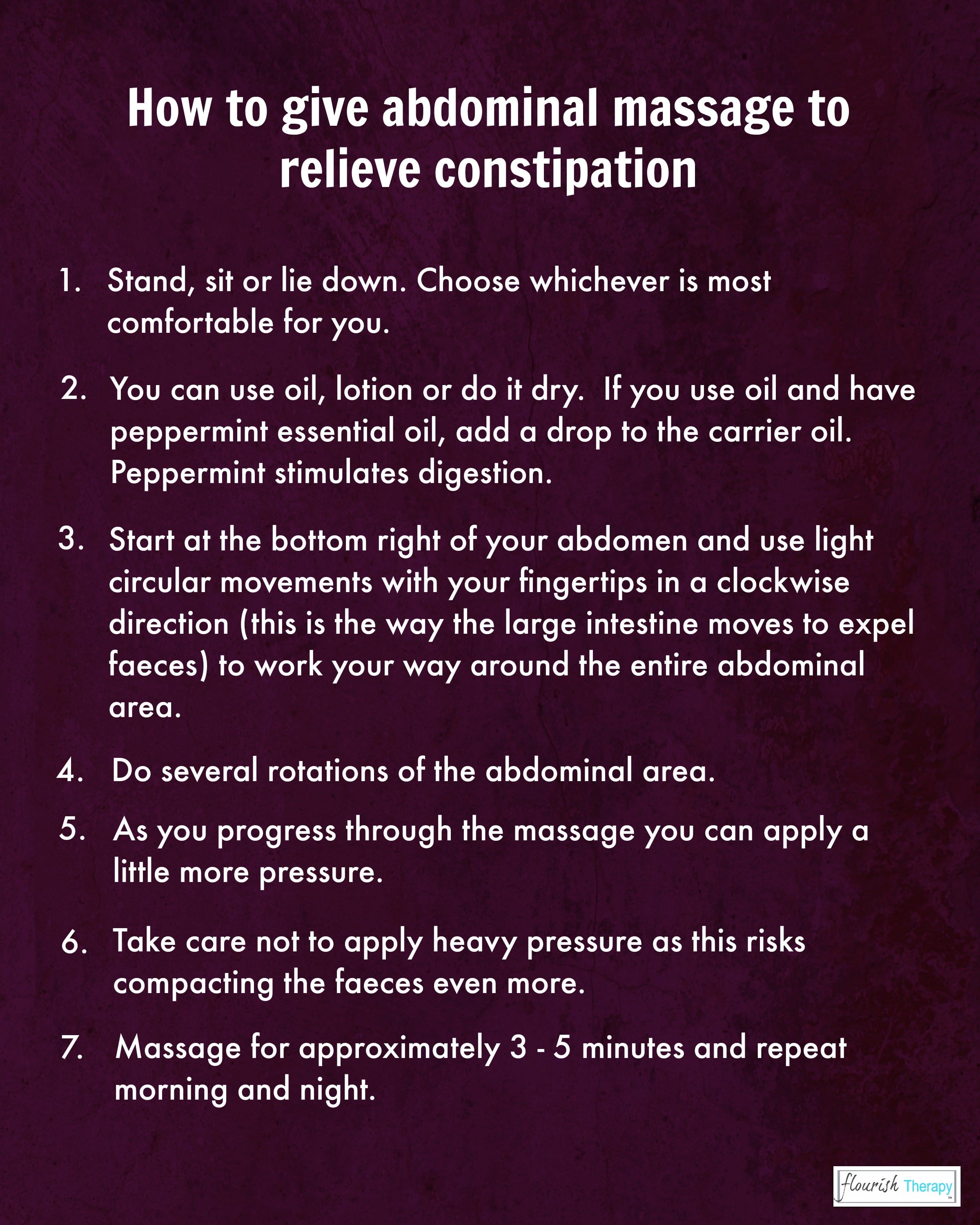Massage therapy and why we need it

Why we need frequent massage therapy
Massage therapy, regardless of what name you give it: remedial, pampering or therapeutic, offers us many benefits for our physical and mental health.
The power of touch alone is essential to our quality of life. Therapeutic touch in the form of massage therapy helps you feel more grounded, connected and emotionally supported, as well as maintaining and promoting good health of the soft tissues and muscles of the body.
What is massage therapy?
Massage therapy on a physical level is the manipulation of soft tissues in the body, particularly muscles and connective tissue. It can be used for relaxation, stimulation or rehabilitation of the whole body or a specific part of it. It promotes suppleness of the muscles, improves circulation, the delivery of nutrients and removal of toxins via the blood stream and reduces muscular tension.
Massage therapy on a psychological level helps us to cope with anxiety, depression and stress via improved physical functioning as well as the connection, support and optimism it helps to create.
I am going to turn this article on its head, and discuss the benefits of massage therapy on mental health first. We tend to seek out massage therapy when we have muscular problems, however I see on a regular basis just how many benefits massage therapy can give to those needing emotional support which is why these benefits deserve first mention.
Massage therapy and mental health
Many studies show that massage therapy offers benefits to those who have little or no connection with other people. The simple act of being touched therapeutically results in improvements in mental welfare such as reducing stress and anxiety. Therapeutic touch conveys compassion in ways that words rarely can.
It enhances social and spiritual capacity and promotes the individual’s confidence in self-reliance.
Emotional release
Emotional release is a term used to describe when an individual emotionally discharges pent-up emotions usually by uncontrolled crying. As a massage therapist and Reiki healer, I have experienced this happening on several occasions.
The power of touch should not be underestimated. If something as simple as providing a massage treatment can have such a profound effect on an indvidual, surely massage therapy should be offered much more regularly as an adjunct to conventional medical-based treatments to help people cope with anxiety, stress and depression.
Some of my clients arrive with the weight of the world on their shoulders. 60 – 90 minutes later following massage therapy, they experience a lifting of mood and a renewed sense of positivity.
Massage therapy has been proven to help reduce blood pressure after only a single session of massage.
Massage therapy and agitation
I recently gave a hand massage to a lady in hospice who died later that day. She was very agitated due to not being able to breathe very well. I had treated her several times before so I was a familiar face. I began by holding her hand and talking gently to her, then began to massage her hand. She began to calm down very soon after the massage had begun and fell asleep within a few minutes.
Another lady I recently treated in hospice was fearful, agitated and also suffering extreme nausea. It was the first time she had ever received a massage and was a little reluctant to let me hold her feet and begin therapeutic touch. With the support of her son and husband, who were with her at that time, I gave her a foot massage. The simple act of holding and gently manipulating her foot soothed her sufficiently that she promptly fell asleep and was eager to receive a future foot massage.
I am always amazed at how effectively therapeutic touch can enhance an individual’s life. I am privilidged to experience it on a near daily basis. I am heartened that more importance is being given to complementary therapies in and out of medical settings. As a therapy-giver myself, I can testify to the effectiveness of it on both the body and the mind.
Massage therapy and the body
Massage therapy forms part of therapeutic bodywork. It also works on a cellular level.
Massage therapy improves the efficiency of the body as a whole, and as result, of each cell within the body. The delivery of nutrients, oxygen and water and the removal of toxins, carbon dioxide and waste is faster and more efficient. It improves digestion and respiration which enables each individual cell within the body to work at its optimum level.
Massage therapy and the skin
The skin is our largest organ and is the most obvious part of the body to benefit from regular massage. Massage therapy stimulates circulation which helps to improve skin tone and colour. It also helps to exfoliate the skin as it rubs off the dead and dried skin cells.
The deeper levels of the skin also benefit from the improved delivery of nutrients and removal of toxins thanks to the stimulation of circulation caused by massage. Sebum levels are positively impacted which helps to improve elasticity and to prevent dryness.
Massage therapy and muscles
Pain in the muscular system is what brings most clients to the massage therapy room. We’ve all experienced soreness in our muscles and instinctively we will rub that area (if we can reach it). There are few experiences more satisfying than having a sore muscle manipulated in such a way as to reduce the inflammation and spasm within the muscle tissue.
Massage removes inflammation and promotes healing by improving circulation which removes lactic acid and toxins and feeds the muscle with nutrients. Manipulation of the muscle leads to relaxation and lengthening of the tissue which helps to encourage flexibility and improve range of motion. It breaks down “knots” and improves the tone of the muscle.
What are knots?
Knots happen when we strain or injure a muscle. Many of my clients have what I call “laptop slump”. They are office based and leaning forwards over a laptop keyboard for long periods of time. This kind of posture stretches the muscles in the back, neck and shoulders and can lead to injury and strain. Many of my clients have hard to reach knots between the shoulder blades, me included from time to time.
Sometimes, no matter how much I exercise or stretch, I feel a tightness that I can’t reach effectively. I searched online for a product I could use to self-massage when this area gets tight. I found the Peanut Massage Ball and I can testify that it works very effectively, not just for the muscles between my shoulder blades, but many major muscle groups such as hamstrings, quadriceps and calf muscles.
Knots can appear in any muscle tissue that has been damaged. Muscles are created by a series of muscle fibres. When the muscle fibres begin to stick together due to strain or injury they form a knot, which causes part of the muscle to feel lumpy. Long term knots can create micro-tears within the muscle fibres which can lead to chronic muscular problems which are difficult to resolve.
Massage therapy can help to break down the knots and improves muscular tone.
How can we help ourselves?
Regular exercise, stretching, good nutrition and frequent hydration contribute to healthy muscle maintenance.
Ergonomic standing office desks are now becoming more popular, particularly for those working from home.
While we shouldn’t be standing all day long, neither should we be sitting for extended periods of time. We are designed to be active and move around, so the more you can stretch regularly and alternate standing and sitting, you will make large inroads into maintaining and promoting your health.
I sit on a Togu Happy Back Ballkissen whenever I am sat at a desk or table. It’s easy to carry around and just sits on top of the chair. It’s filled with air and creates a slightly unstable platform so encourages the muscles in your back to constantly make little movements to help maintain and strengthen core stability.
I also use it when I’m doing floor exercises as my coccyx seems to get in the way on a normal exercise mat. Because the Ballkissen is slightly unstable, it super challenges your core muscles when your legs are lifted off the ground such as V ups, V bicycle etc.
Massage therapy and the lymphatic system
We all need healthy immune systems and the lymphatic system forms part of the immune system,
Massage therapy stimulates the lymphatic system which moves lymph around the body. The lymphatic system has no pump, unlike the circulatory system, so relies on us to move around to maintain lymphatic functions. This is another reason why exercise is so good for us as it pumps the lymph around our bodies.
When people are bed-bound, or very sedentary, they often develop swelling, particularly in the extremities, which is due to the fact that the lymphatic system is not receiving the stimulation it requires to function properly.
Massage therapy helps to support lymphatic functions such as removal of waste and toxins and boosting immunity. It helps to reduce swelling, reduces cellulite and lumpiness and improves lymph circulation which helps in maintaining optimum health.
Massage therapy and the circulatory system
Massage therapy helps to improve blood circulation around the body, particularly to areas just below the skin and within muscle tissues. This means that oxygen and nutrients are delivered more effectively as is the removal of waste and toxins.
Massage helps to reduce blood pressure due to the calming and nurturing effects of this treatment.
Regular massage, specifically abdominal massage, helps to overcome the problems of constipation.

Massage therapy and joints
Regular massage helps to combat the pain associated with bone-related and joint-related diseases and injuries. Muscles are attached to bones and by manipulating tight and damaged muscles, we are reducing the strain (pulling effect and inflammation) on the bones to which they are attached.
Muscles attach to the bones via tendons. Insertion points of the tendons into bones can become inflamed, but working on the muscle leading to the tendon, can help to reduce inflammation and pain. Tendons can be treated directly, but respond much more slowly to treatment due to the lack of blood supply (they contain very few blood vessels).
Massage and passive joint movements help to warm up the area surrounding joints which helps to stimulate fresh synovial fluid production as well as improving the removal of waste from the synovial joint. Many studies have proven how effective regular massage therapy is in relieving the symptoms of diseases such as arthritis and rheumatoid arthritis.
I see several patients in hospice who suffer bone and joint related pain and they benefit enormously from regular massages. I also see a client privately who suffers from ankylosung spondilitis. He maintains his health very well out of the therapy room, yet still derives a lot of benefit from his regular massages.
Massage therapy produces benefits in multiple ways by enhancing the functioning of the systems within the body and promoting a sense of connection, health and optimism which helps individuals to cope with life’s pressures more effectively. My hope is that we continue to see massage therapy being offered to more individuals who would benefit from the physical and psychological support that this nurturing therapy delivers.
What are your experiences of massage therapy?
[et_bloom_inline optin_id=optin_8]













